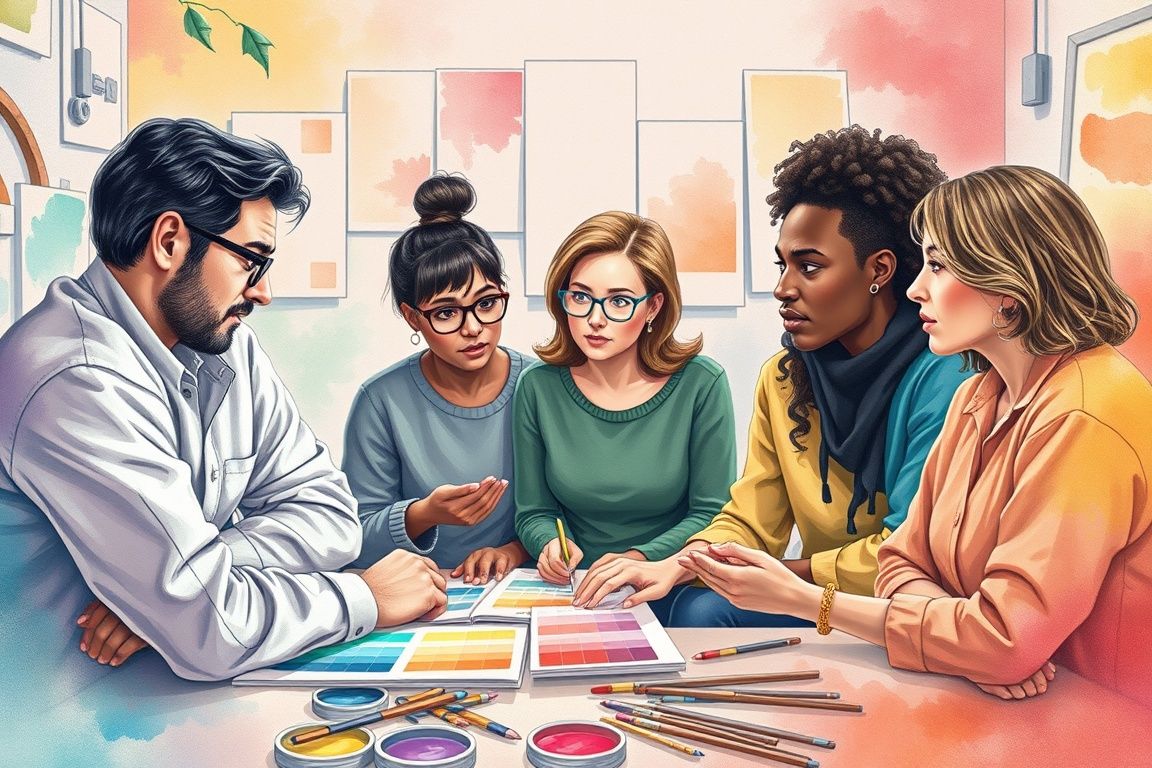Exploring Color Theory in Visual Storytelling
Why It’s Worth It
Understand how colors influence emotions and narratives in visual media, enhancing your storytelling skills in photography and film.
Gain practical techniques for creating and applying color palettes effectively in your projects, ensuring your visuals resonate emotionally with audiences.
Develop a solid foundation in color theory, allowing you to confidently explore creative choices and innovations in your visual storytelling.
Your Learning Roadmap
Fundamentals of Color Theory in Visual Storytelling
In this module, participants will learn about the origins and essential elements of color theory. They will explore basic color properties such as hue, saturation, and brightness, as well as understand the psychological influences of color in art and media. The module sets the stage for deeper exploration by establishing a solid conceptual foundation. History of Color Theory Basic Color Properties Psychology of Color Color in Art and Design
Color Harmony and Visual Balance
This module delves into the relationships between colors and how harmonious combinations can convey mood and structure. Participants learn about complementary, analogous, triadic, and tetradic schemes to understand balance. The lessons aim to provide frameworks for selecting color combinations that effectively support visual storytelling. Learners will connect theoretical concepts with practical application techniques. Understanding Complementary Colors Exploring Analogous Color Schemes Triadic and Tetradic Color Combinations Applying Color Harmony in Visual Narratives
Color Contrast and Visual Impact
This module focuses on the use of contrast in enhancing visual impact. Participants will study different types of contrast, such as warm versus cool and light versus dark, and discover how these elements drive narrative focus. The course material details how contrast directs viewer attention and creates dramatic scenes. Practical examples and case studies facilitate the understanding of contrast in various media formats. Understanding Visual Contrast Types of Color Contrast Contrast in Composition Case Studies in Color Contrast
Color Palettes in Photography
This module examines the role of color palettes in the field of photography. Learners will explore how subtle variations in color reinforce the mood of a scene. The lessons cover practical techniques from adjusting lighting to post-production editing. Participants will analyze iconic photographs to understand how colors impact narrative and emotion. Understanding Photographic Color Palettes The Role of Mood and Lighting Digital Editing and Color Enhancement Case Studies of Iconic Photographs
Color in Film and Visual Storytelling
This module focuses on the application of color in filmmaking and visual narratives. Learners will examine cinematographic techniques that use color to underline story elements. The lessons reveal how directors manipulate lighting and color to guide audience emotions. Detailed film examples illustrate theoretical concepts in practice. Color in Cinematography Storytelling Through Color Lighting and Creative Color Techniques Film Analysis and Case Studies
Practical Workshop and Projects
This final module emphasizes experiential learning through practical assignments. Participants work on projects that require designing color palettes and visual storyboards. The module integrates previous lessons into actionable tasks and collaborative exercises. Feedback sessions and a final project showcase empower learners to exhibit their understanding of color theory in storytelling. Creating Your Color Palette Designing a Visual Storyboard Critique and Collaborative Feedback Final Project Showcase
What Users Are Saying
All You Need to Know
Enroll Now!
AI assistant provides instant feedback.
Learn at your own pace, anywhere, any time.
Engage with real-time chat for personalized support.
Practical exercises link theory to application.
Datasets and case studies enrich learning.
Collaborative projects enhance creative skills.

